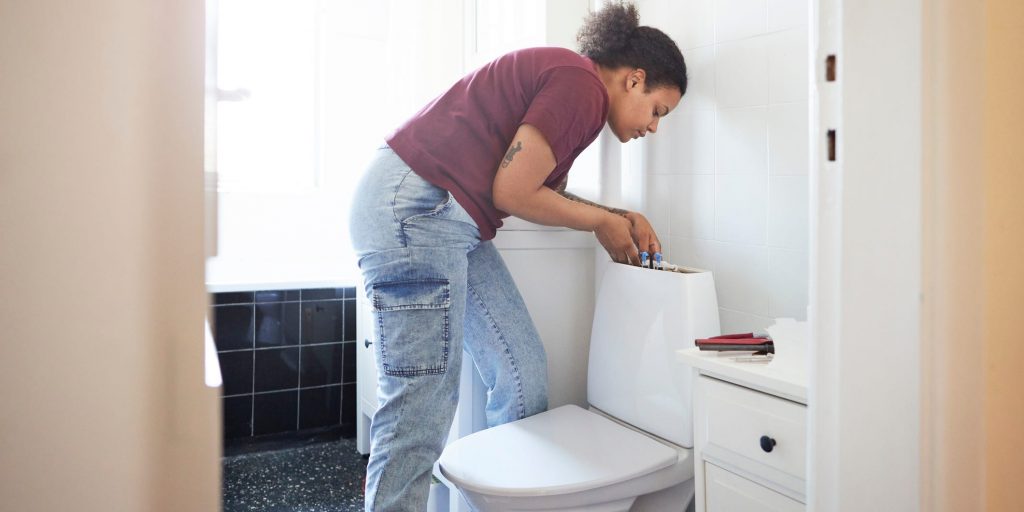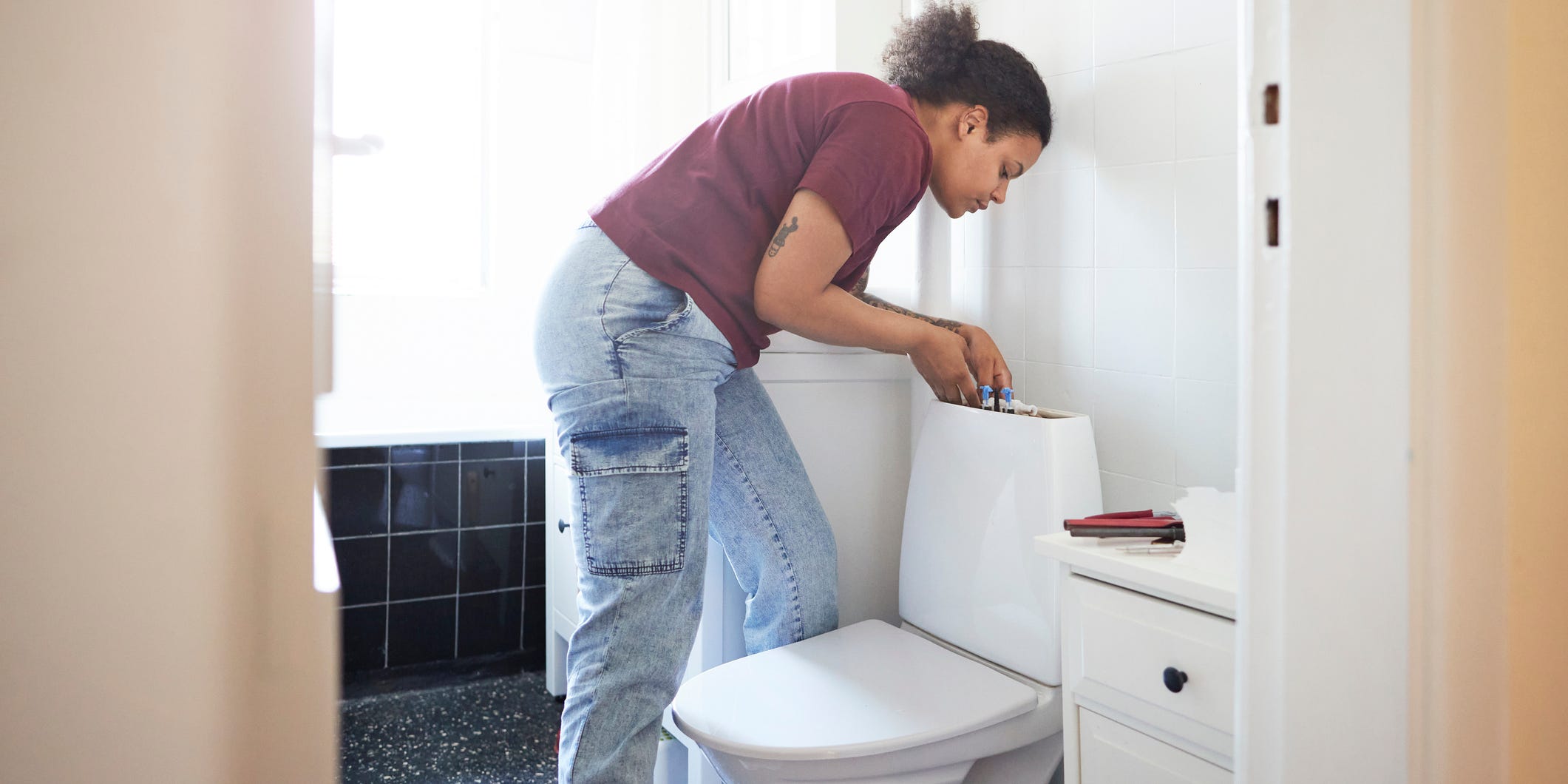
- The float, the flapper, or the fill valve are the most likely causes of a toilet running continuously.
- You can perform easy tests like monitoring water movement to help identify the cause.
- Whichever part is the culprit, it's easy to remove and replace yourself.
- Visit Insider's Home & Kitchen Reference library for more stories.
A running toilet isn't just noisy and annoying; it also means you're spending money on extra water, and your utility bills could go up. Luckily, there are a few simple solutions that can often fix the problem without the need for a plumber. Here's how to determine the problem, how to troubleshoot your running toilet, and how to implement the fixes.
Diagnosing the problem
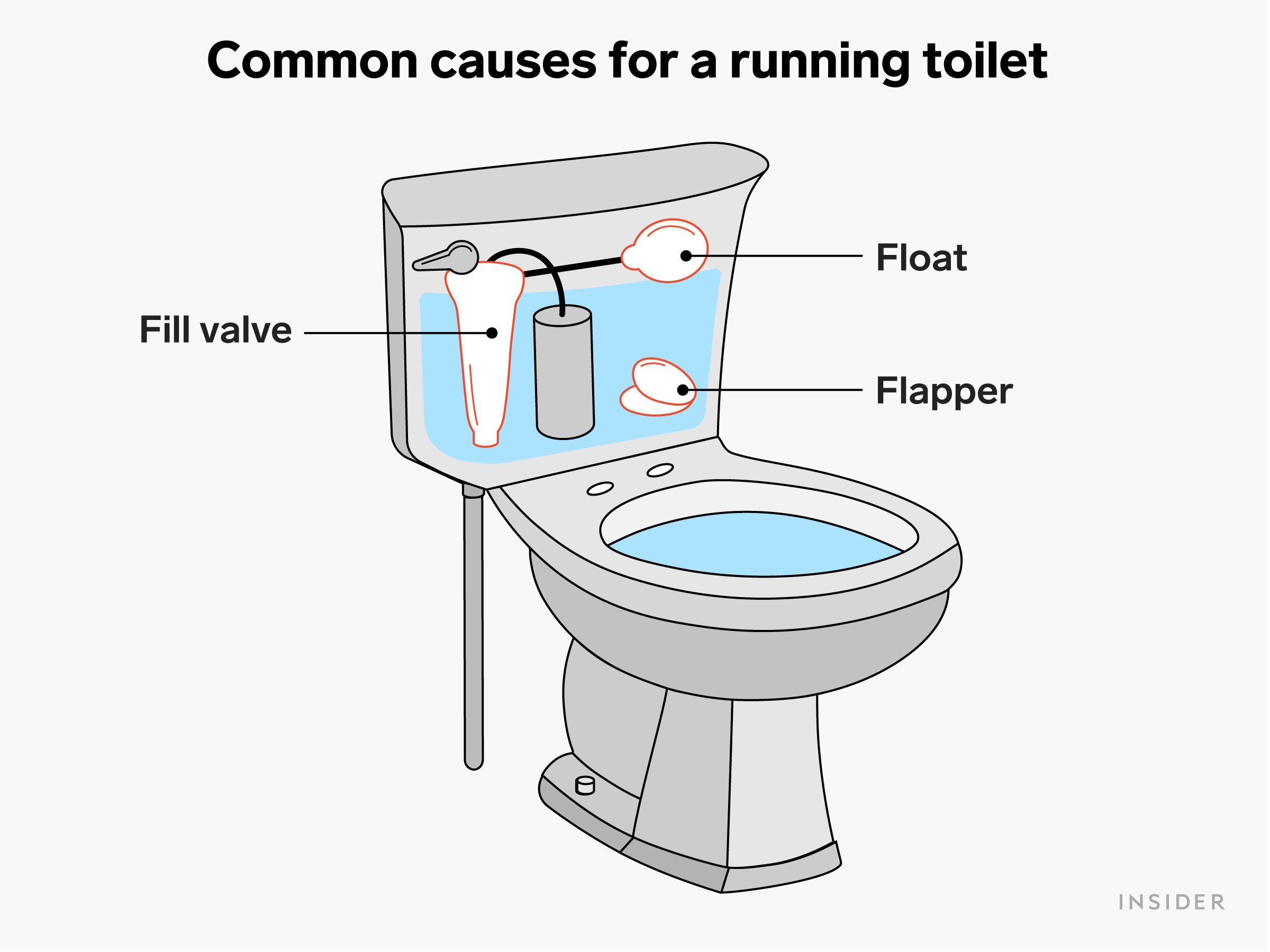
There are three main issues that are often the cause of a running toilet. You'll need to examine each of these components to determine which is causing the problem.
1. The flapper
The flapper, which creates a seal in the bottom of your toilet tank and then lets water flow into the bowl when you flush, is one common cause of running toilets. The flapper can gradually wear out and leak, at which point it needs to be replaced.
Duane Miller, owner of Stellar Plumbing, explains that there's a simple way to test to see if your flapper is letting water leak through into the toilet bowl. You can put a few drops of food coloring into your toilet tank, then wait for 30 minutes. Don't flush the toilet during that time. After 30 minutes, look into the toilet bowl to see if any dyed water has seeped into the bowl. If it has, it means that you need to replace your flapper.
2. The float
According to Miller, if your float ball isn't working or the height needs to be adjusted, water could continuously run into your toilet. Miller states that if your float isn't adjusted correctly, it can cause the water level in your tank to be too high.
When the water gets too high, it can seep over the top tank into your overflow tube. Your overflow tube channels water into the toilet bowl so that it doesn't overflow the tank. The result is that the tube will continue to channel that water into the bowl, and your toilet will keep adding water to try to maintain that too-high water level.
3. The fill valve
It's also possible that your fill valve is leaking and needs to be replaced. Your fill valve controls the flow of water into your tank, and it stays on until your tank has filled. It's also sometimes called a ballcock.
To test to see if your fill valve is functioning normally, remove the lid from your tank and flush your toilet. Look to see if water is leaking from any part of the valve. If you can't see any visible leaks, then lift up the arm that's attached to your float while the tank is filling. The water should stop. If it doesn't, there's probably a leak lower down in the fill valve that you can't see.
How to replace the flapper
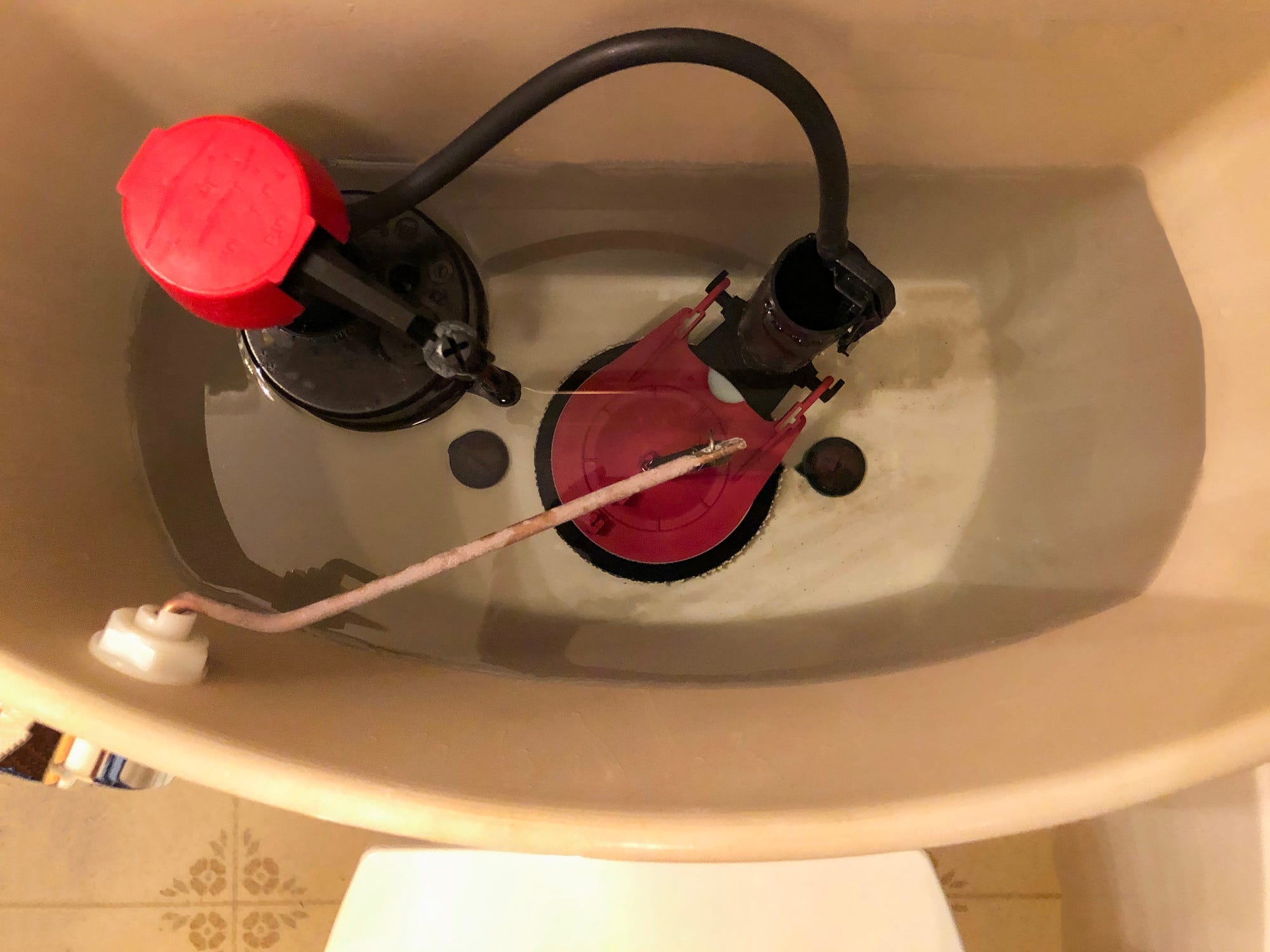
If you've determined that the flapper is leaking, then you'll need to replace it. It's a relatively easy process.
1. Turn off the water supply. Your toilet's water supply comes through a hose that's often on the left side of the toilet. That hose goes into your wall or floor, and there will be a handle at the base of the hose. Turn that handle all the way to the right until it's tight.
2. Flush the toilet. By flushing the toilet, you'll drain all of the remaining water from the tank.
3. Remove the flapper. The flapper will have a chain that attaches to the flush lever inside your tank, which you can unclip. Different flappers mount into the tank in different ways, but you should be able to wiggle, bend, and otherwise remove the flapper from the base of the tank.
4. Buy a new flapper. Your new flapper will need to be the same size and type as your old one. The easiest way to ensure you're buying the right flapper is to take your old flapper to the hardware store with you so you can compare the models. Most hardware store staff will also be able to help you.
5. Install the new flapper. The exact installation method you'll use will depend on the type of flapper you have, so refer to the directions that come with your new flapper.
6. Adjust the flapper chain. The flapper chain needs to be the right length. If it's too long, the flapper won't fully lift off of the drain hole, so you won't get a full flush. If it's too short, the flapper may not be able to close and seal properly. Adjust the chain so there's about ½-inch of slack when your flush lever is in the normal position.
How to adjust the float
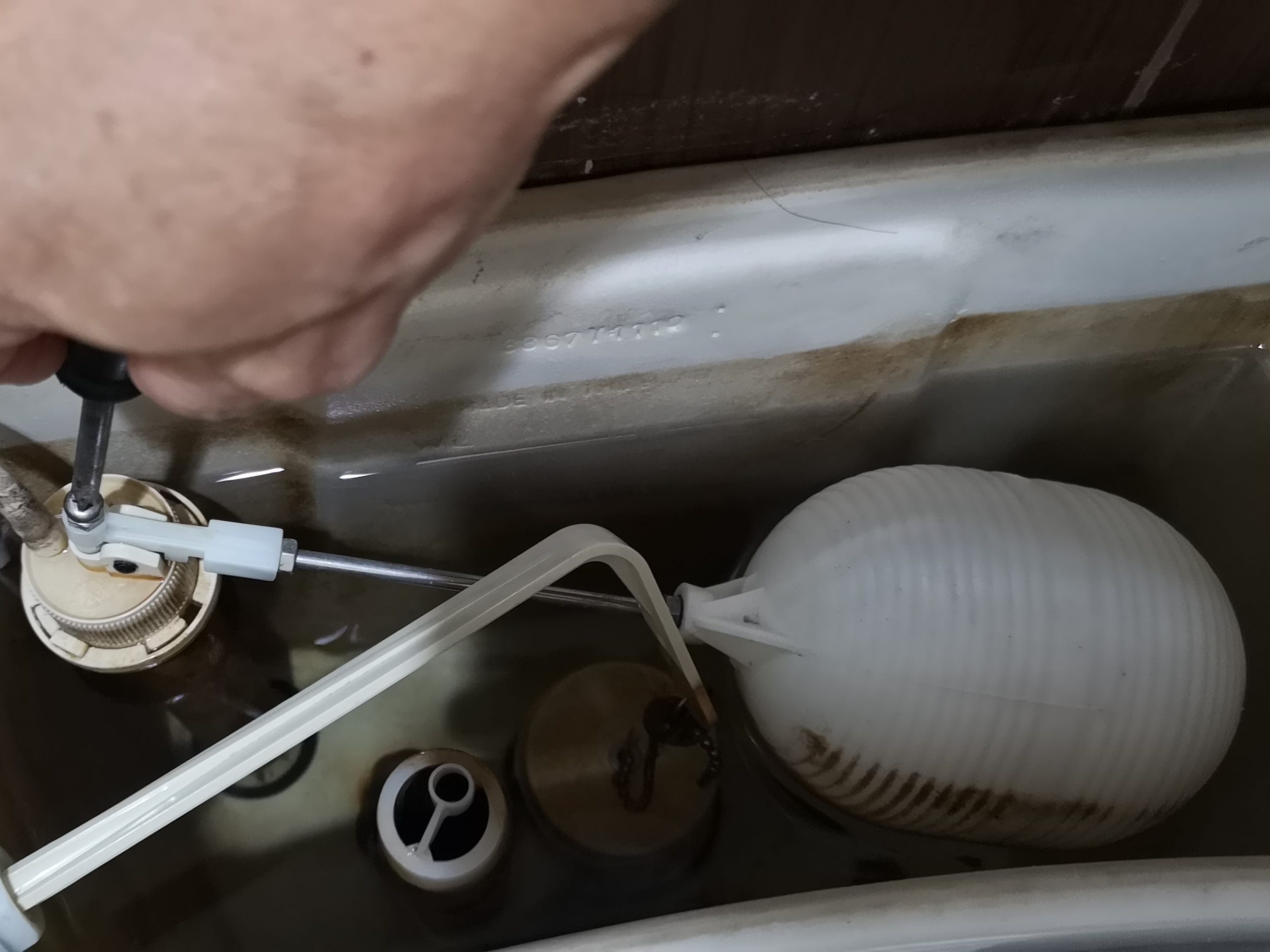
If your float is causing the toilet to run, you'll need to adjust it. There are two main types of floats. Ball and arm floats feature a small plastic ball that floats on the water. There are also column floats that are installed vertically in your toilet. The steps you follow will depend on the type of float you have.
Ball and arm float
1. Check the float level. It's best to have your float set so it is one to two inches beneath the overflow tube. There might be a line on the toilet tank that identifies the ideal water line. Make reference of this point so you know where you'll want your float to sit after the adjustment.
2. Turn off the water supply. Your toilet's water supply comes through a hose that's often on the left side of the toilet. That hose goes into your wall or floor, and there will be a handle at the base of the hose. Turn that handle all the way to the right until it's tight.
3. Loosen the float. Using a screwdriver, loosen the screws holding the float in place by turning counterclockwise. The screws are often located close to the fill valve.
4. Adjust the float. Looking at the water line on the tank, determine where the float needs to sit. You can loosen the screws more to lower the float, or you can tighten them to raise the float.
5. Test the float level. After making the adjustment, turn the water to the tank back on by turning the handle on the water input hose to the left. Wait for the tank to fill up. Once it's full, make sure that the float is sitting at the water level. If it's too high or too low, you'll need to repeat the process to make the appropriate adjustment.
Column float
1. Check the float level. It's best to have your float set so it is one to two inches beneath the overflow tube. There might be a line on the toilet tank that identifies the ideal water line. Make reference of this point so you know where you'll want your float to sit after the adjustment.
2. Turn off the water supply. Your toilet's water supply comes through a hose that's often on the left side of the toilet. That hose goes into your wall or floor, and there will be a handle at the base of the hose. Turn that handle all the way to the right until it's tight.
3. Identify the float release clip. Looking into the tank, you'll see a long tube that runs from the float to the fill valve. There will be a clip on that tube. That clip is the float release clip.
4. Loosen the clip. Loosen the clip by either squeezing or rotating it.
5. Adjust the float height. Lower or raise the float by pushing down on it or pulling up on it. Adjust the float until it is even with the water line that you identified earlier.
6. Tighten the clip. With the float in the proper position, tighten the clip by either releasing it or rotating it. This will hold the float in place.
7. Test the float level. After making the adjustment, turn the water to the tank back on by screwing the handle on the water input hose to the left. Wait for the tank to fill up. Once it's full, make sure that the float is sitting at the water level. If it's too high or too low, you'll need to repeat the process to make the appropriate adjustment.
How to replace the fill valve
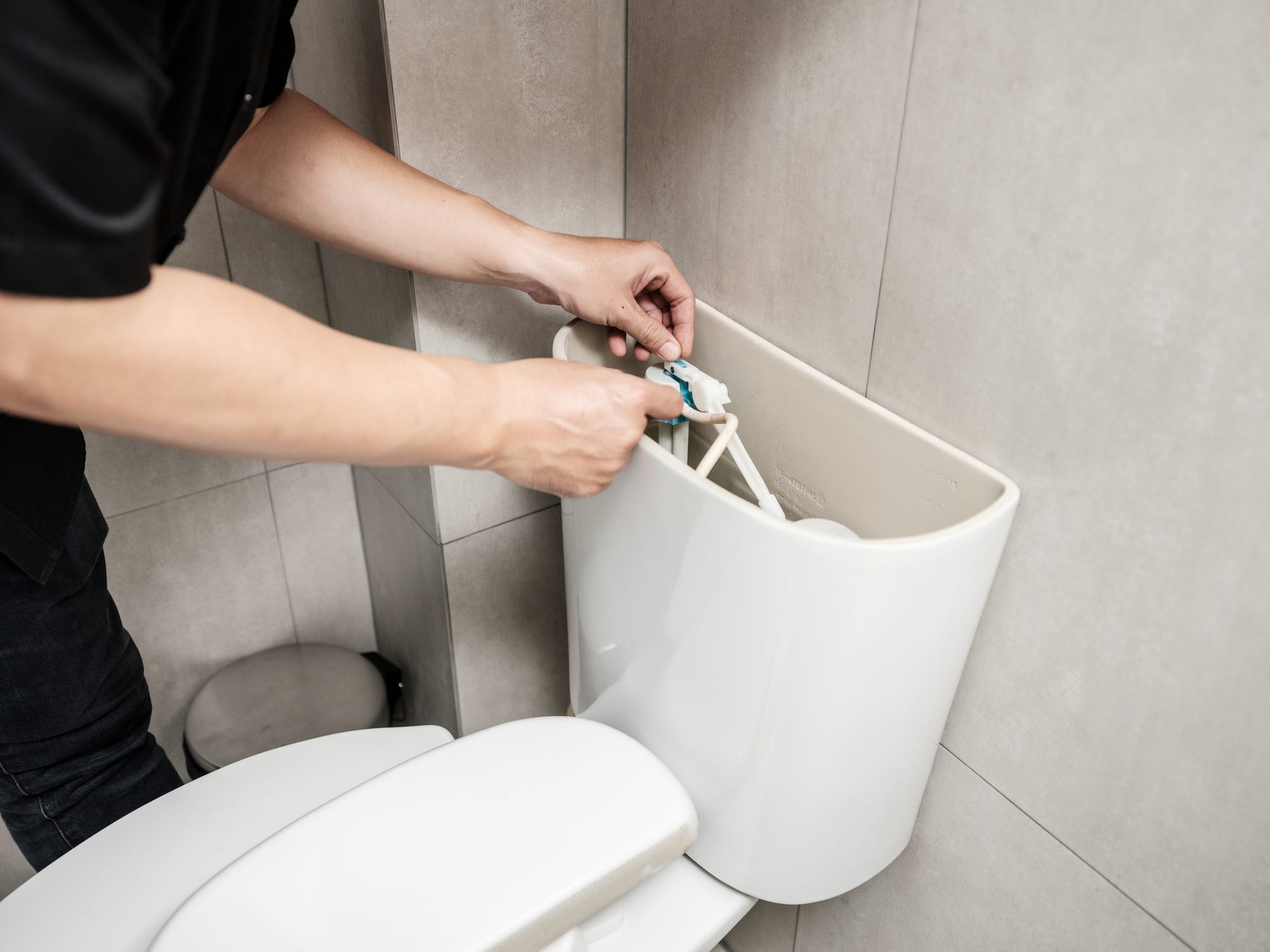
If your fill valve is leaking, you'll need to replace it following the steps below.
1. Turn off the water supply. Your toilet's water supply comes through a hose that's often on the left side of the toilet. That hose goes into your wall or floor, and there will be a handle at the base of the hose. Turn that handle all the way to the right until it's tight.
2. Flush the toilet. By flushing the toilet, you'll drain all of the remaining water from the tank.
3. Disconnect the water supply from the tank. Follow the water supply hose up to where it connects to the bottom of your tank. Unscrew that hose and drop the loose end into a bucket.
4. Remove the fill valve. Reach down into the tank and locate the lock nut at the base of the fill valve. Unscrew that lock nut. You should now be able to remove the fill valve by lifting it straight up.
5. Buy a new fill valve. You'll need to buy a new fill valve that's the same size as your previous valve. The best way to accomplish this is to bring your old fill valve with you to the hardware or plumbing store.
6. Install the new fill valve. The specific installation steps will vary depending on the fill valve model that you buy, so refer to the installation instructions that come with the valve.
7. Reconnect your water supply. Reconnect the water supply hose to the bottom of your tank by positioning it and then tightening the lock nut on the end of the hose.
8. Turn your water supply back on. Turn your water supply on by turning the handle at the base of the hose back to the left. Let your tank fill back up.
Insider's takeaway
The flapper, float, and fill valve are all common causes of running toilets. Fortunately, they're all fairly easy to test and then replace if you find an issue. A simple float adjustment might solve the problem, or you might need to replace your flapper or fill valve entirely. When repairing your toilet, be sure to pay attention to details. Slight differences in a new replacement part or a float level that's just a little bit off can lead to problems with your toilet.
While it's empowering to fix your toilet yourself, don't hesitate to call a plumber if you can't identify the problem or if the job is more challenging than you're comfortable with.
